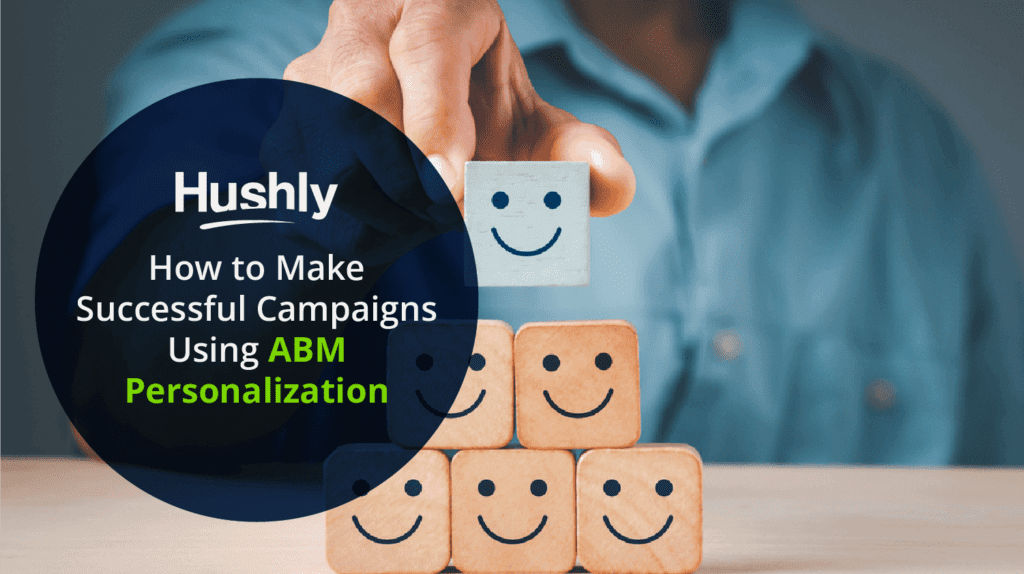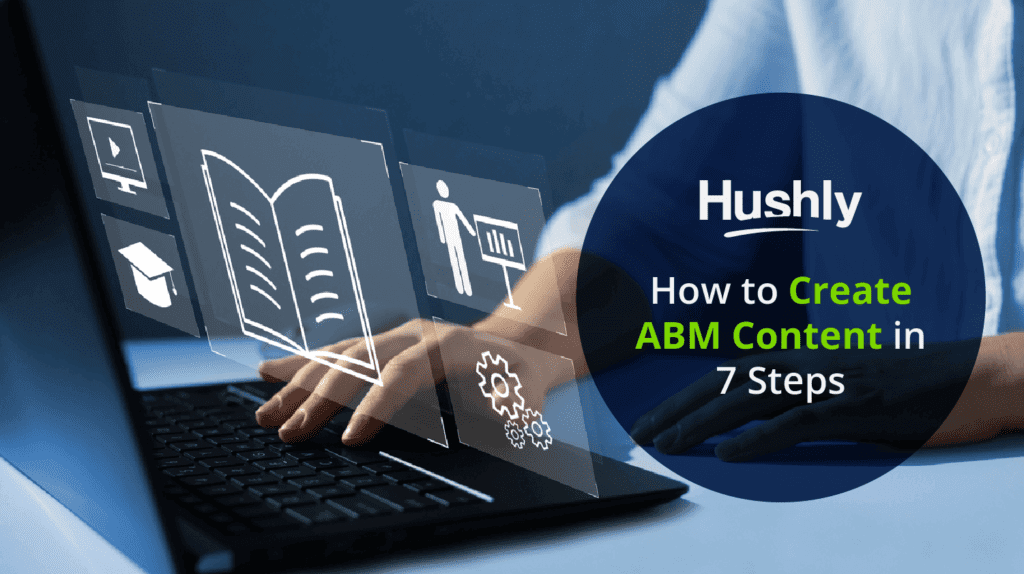Filters
Content Type
Topic
How to Make Successful Campaigns Using ABM Personalization
The age of account-based marketing is here, and personalization is right alongside it.
Since 2020, B2B marketers in every industry have come to understand the value of targeting high-value buyers and tailoring marketing to them on a personal level.
Marketers have several challenges when shifting from traditional inbound/outbound campaigns to personalized ABM strategies, however. Among these are the difficulties in selecting targets, prioritizing them, and defining the metrics that will measure your success.
We’ll discuss some key concepts and suggest a few ways your company can make more successful campaigns using ABM personalization.

What is ABM Personalization?
To understand what we mean by ABM personalization, let’s break it down into its components.
What is ABM?
ABM is the practice of account-based marketing. It represents a fundamental shift in the way marketers, advertisers, and sales teams pursue B2B customers.
In the past, it was considered enough to produce marketing materials with a wide range of possible targets in mind. The goal of advertising was generally seen as casting a wide net and letting the marketing materials and sales teams find the highest-value customers from those who showed interest.
With the advent of ABM, marketers are now tailoring their marketing content, strategies, and prospecting to those customers who show the most long-term value.
In short, the shift towards ABM is the marketing industry realizing that having a few loyal customers who spend big and can grow alongside you is more valuable than many smaller customers who are always looking for a better deal somewhere else.
What is Meant by Personalization?
Naturally, when targeting individual buyers, there must be a level of personalization in the advertising.
This means attempting to speak directly to specific buyers on a human level. Getting to know your best customers inside and out, and designing materials, sales pitches, and even products around them will naturally lead to an increased level of personalization.
It’s not just B2B customers who expect a level of personalization anymore, either. The switch to ABM and the emphasis on personalization that comes with it will give your company a leg up whether you’re hunting whales or just trying to convert more customers.
5 Steps to ABM Personalization
Personalization means that each advertising campaign and set of marketing materials you create will need to be uniquely tailored to each customer.
But how do you know which customers to target? Who will bring in the most value and, therefore, justify your effort in finding and wooing them?
Once you’ve figured that out, you’ll need to go further to find out how to best personalize every campaign you design.
Though the result should be unique, there are some proven steps you can take to make the design process more streamlined and scalable.
1. Create a Shortlist of Companies to Target
Start by creating a list of dream companies that you’d love to work with. Don’t worry about feasibility or how much time or effort these companies will take, for now. At this point, you’re still in the brainstorming stage and not committed to any decisions.
The point of this step is to illuminate the pool of companies you might be choosing from and give you some idea of what targeting them might entail.
2. Categorize Your Target Companies
Once you have a nice pool of candidate companies, it’s time to rank them based on a few key factors.
These factors should be at least somewhat unique to your business or industry. Here are some general factors you should consider when categorizing your target companies:
- Size of the target/potential revenue
- Compatibility and scalability
- Existing relationships
Try to categorize companies into tiers. At tier 1, you’ll have companies for whom full 1:1 ABM marketing will be appropriate. This means companies for which you’d design custom campaigns, marketing, and all sales materials from the ground up.
At the top of your tier list are the companies for which you’ll be doing true ABM marketing, with no hint of mass production and a great deal of time and energy involved on your part.
Tiers below 1 should be organized based on the same principles, with each lower tier getting a progressively less intensive form of ABM marketing.
At the bottom of the tier listing are companies for whom you may design 1:many marketing that is less specific and, therefore, less personal. This lack of extra time investment should be reflected in how much ROI you expect.
3. Identify the Humans Involved and Design Content for Them
This part will take some research, but it’s very important.
Spending days or weeks designing targeted marketing materials is a huge investment, and it could all be wasted if you end up presenting your marketing materials to someone who isn’t authorized to make buying decisions.
To avoid this pitfall, list the people to target across teams within each company. Create a list of real human beings and what you know about them. Keep a personnel file that will make it easy for anyone from your company to interact with that human and have some knowledge base to draw on. This will increase personalization and consistency.
Focus on creating content for these individuals.
Here are a few types of content you can customize:
- Landing Pages
- Webpages
- Email Campaigns
- Marketing Content (Blogs, videos, and all other media types)
4. Collect Data, Analyze, and Optimize
Every step of your ABM personalization should generate valuable data you can use to improve the process further.
Before starting your ABM personalization journey, make concrete choices about which metrics you’ll be tracking. You’ll need to decide what success looks like based on these metrics.
What goals are you aiming for and why? Knowing the answer to this will simplify any problems you may have with metrics or data tracking.
5. Try a Content Experience Platform like Hushly
ABM and marketing personalization, in general, require a ton of time, effort, experience, and dedication to get right.
This level of involvement can be enough to give some marketing executives pause. Though the ROI and benefits of ABM are clear, the effort involved in switching can be daunting.
If you think your company might lack the time and resources required to effectively implement an ABM personalization campaign, Hushly is here to help.
Our unique platform is the best tool for ABM personalization from the ground up.
With Hushly, you can:
- Design custom landing pages with brand elements that will impress your targets and help you stand out from the competition. Best of all, our interface is simple to use and can be updated at any time with just a few drags and drops.
- Design custom ABM email campaigns that can speak directly to your most important buyers on a human level.
- Curate dynamic webpages that can be personalized based on who is visiting.
- Use data-driven AI to optimize every step of your ABM personalization.
ABM and Personalization: A Match Made in Marketing Heaven
Regardless of your experience level with ABM or personalization, making the switch is not quite as daunting as it seems.
There are great ways to reproduce ABM personalization at scale, no matter which companies you’re targeting or your familiarity with them. There are also excellent online tools and platforms, like Hushly’s, which can make your ABM personalization more effective.
By efficiently targeting accounts, prioritizing them, and identifying the individuals involved in the buying process for each one of them, you can succeed at ABM personalization.
Hushly can make the work of personalizing ABM campaigns a breeze. Learn how we can help you scale your ABM personalization today.
The post How to Make Successful Campaigns Using ABM Personalization appeared first on Hushly.



